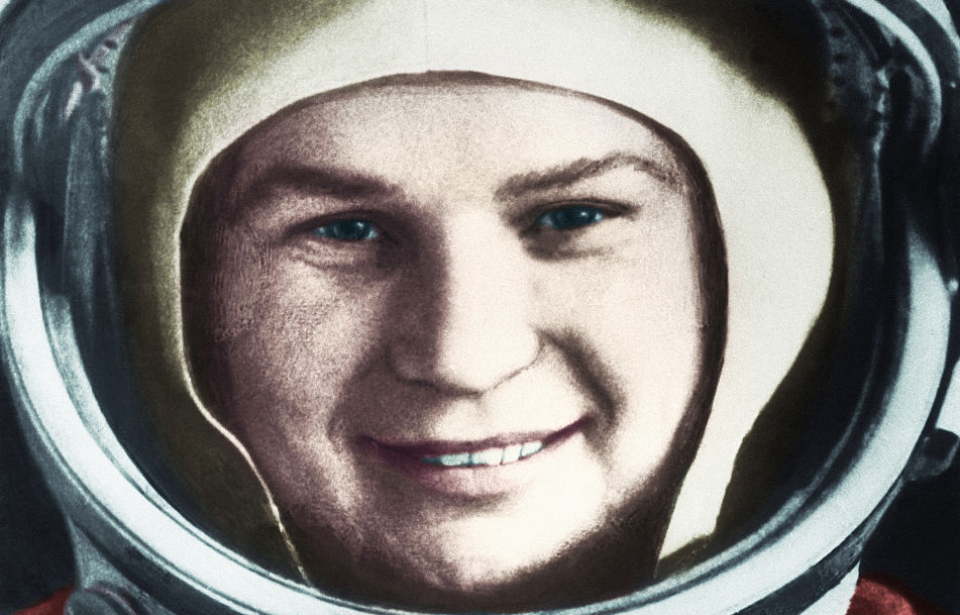At the height of the Space Race – and that of the Cold War – the Soviet Union became the first nation to send a woman into space, as part of the Vostok 6 mission in June 1963. After the mission, which saw Valentina Tereshkova conduct 48 consecutive orbits around the Earth and spend just over 71 hours in space, it was time for an introduction to the rest of the world.
She was soon heard on radios and televisions around the globe, with various languages representing the individual who broke all barriers and made a huge leap toward gender equality.
From skydiving to higher ambitions
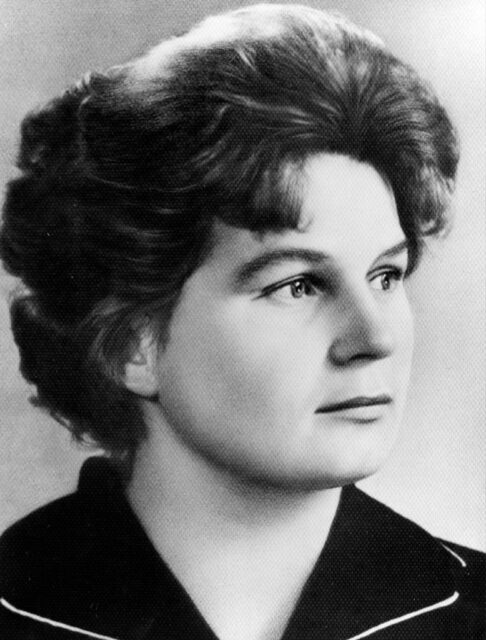
Valentina Tereshkova was born on March 6, 1937, in Bolshoye Maslennikovo, 170 miles northeast of Moscow, Russia. She was of Belarusian heritage. Following her father’s death during the Winter War – part of World War II – her mother moved the family to Yaroslavl, as it offered better employment opportunities.
Tereshkova had never been scared of heights and went so far as to take up skydiving as a teenager, earning the title of “Skydiving Champion” in her region. With 150 jumps under her belt by the time she was in her early twenties, her ambitions only continued to grow.
Valentina Tereshkova answers the call
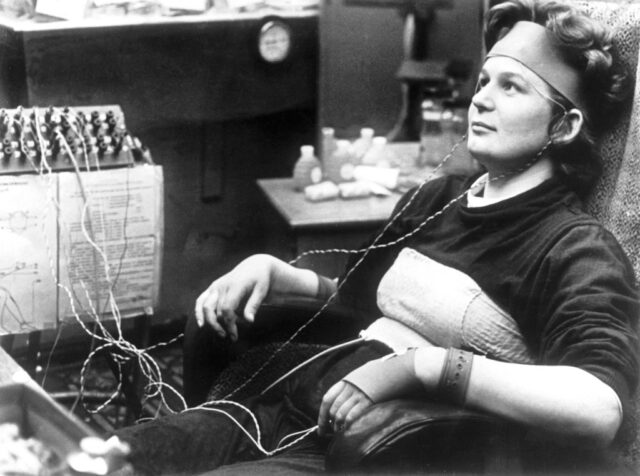
Vostok 6 was scheduled to launch two years after Yuri Gagarin famously became the first man in space, with his success being the main catalyst that led the Soviet government to seriously consider the option of sending up a female cosmonaut. This was further influenced by rumors that the United States was training females for spaceflight. It was also the primary inspiration for Valentina Tereshkova to pursue her future career.
When the call went out for applicants, Tereshkova viewed it as an opportunity to make her dreams come true. As it normally went in the USSR, a competition of such great importance was classified. As such, it was presented to the public as nothing more than a parachuting contest, to avoid information leaks. The requirements were as follows:
- No one over the age of 30.
- Maximum weight of 154 pounds.
- No more than 5-foot, seven-feet tall.
By 1962, 400 women had applied, but only five candidates were considered: Tereshkova, Valentina Ponomaryova, Tatyana Kuznetsova, Zhanna Yorkina and Irina Solovyova.
An 18-month period of vigorous training followed, with tests involving weightless flights, isolation, reaction to the centrifuge and other space-related issues. The training included 120 parachute jumps, as well as learning how to pilot a Mikoyan-Gurevich MiG-15UTI, and the applicants also received advanced knowledge in engineering, so they could properly respond to any malfunctions that popped up during the mission.
While Tereshkova wasn’t the prime candidate at the beginning, she managed to overcome all the challenges placed before her and become the chosen cosmonaut to venture into space.
Valentina Tereshkova launches into space
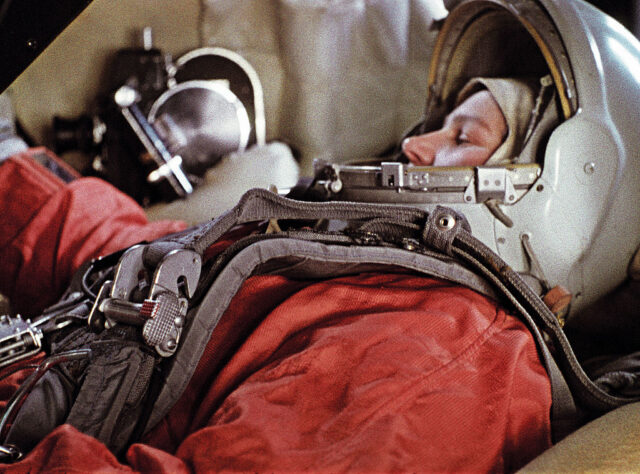
Vostok 5 and 6 were both initially intended to be flown by female cosmonauts as part of a joint mission – Valentina Tereshkova manning Vostok 5 and Valentina Ponomaryova in charge of Vostok 6. However, due to technical difficulties and postponements of the launch dates for the former, the first was manned by male cosmonaut Valery Bykovsky.
On June 14, 1963, Vostok 5 launched. Two days later, Tereshkova entered the history books from the platform of the Baikonur Cosmodrome, in present-day Kazakhstan. She was alone – another first for a woman. Upon her ascent, she radioed, “It is I, Seagull! Everything is fine. I see the horizon; it’s a sky blue with a dark strip. How beautiful the Earth is … everything is going well.”
“Seagull” was in reference to her call sign, “Chaika.”
Vostok 6 spent 71 hours in space, meeting with Vostok 5 at one point, with Tereshkova and Bykovsky exchanging communications via radio. During the exchange, the two cosmonauts also communicated with Soviet Premier Nikita Khrushchev, confirming the mission was a success.
Vostok 6 was far from an easy mission
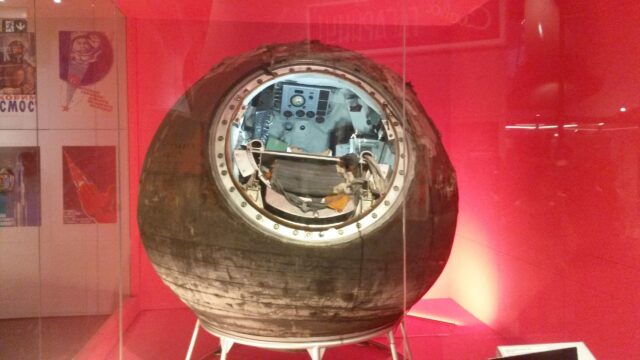
Aboard Vostok 6, the situation was far from peachy. Valentina Tereshkova experienced nausea and vomited after one meal, but she later attributed the sickness to the taste of the food and not a vestibular disturbance, as ground control had assumed. She also suffered problems with the pressure from her helmet. This was further confirmed by Bykovsky. At one point, the pain became so unbearable that Tereshkova was recorded humming lullabies in an attempt to soothe herself.
The spacecraft itself also experienced technical issues during the mission, although this information remained classified until 2004. Apparently, an error occurred during the flight, causing the craft to initially ascend from orbit, instead of descending. Tereshkova reported this fault on the first day of the mission, mobilizing the engineers from ground control to write a completely new landing algorithm for the onboard computer in very short order.
Nevertheless, and despite all the flaws, the mission ended according to plan, landing some 125 miles (200 km) from the city of Barnaul, in Western Siberia; Tereshkova had remained in control and managed the mission successfully. Upon landing, locals arrived before her official welcoming committee. They helped her out of her spacesuit and invited her to dinner. While this was completely against protocol, the cosmonaut decided to join them.
She was later reprimanded for the act, but that didn’t stop Tereshkova from receiving the highest decorations from the state for her accomplishment.
What did Valentina Tereshkova do after Vostok 6?
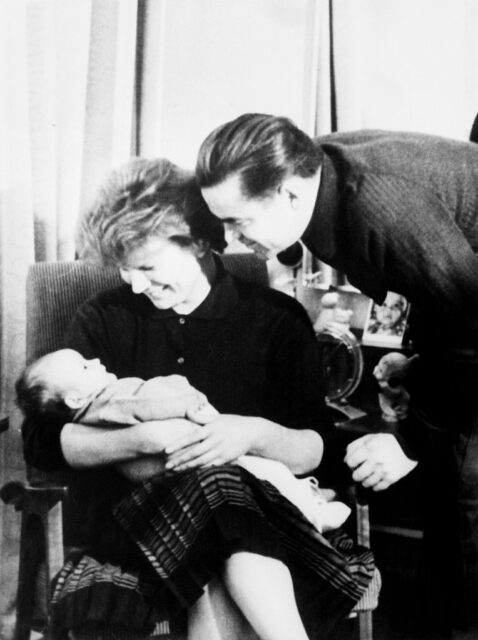
Valentina Tereshkova went on to have a career in politics, which she continues to this day. She was 26 when she reached the stars and went on to live a life of longing to go back, once saying, “They forbade me from flying, despite all my protests and arguments. After being once in space, I was keen to go back there. But it didn’t happen.”
Just a few months after returning to Earth, Tereshkova married fellow cosmonaut Andriyan Nikolayev. A year later, she gave birth to their daughter. However, their love didn’t last and the pair divorced, with Tereshkova going on to marry surgeon Yuli Shaposhnikov.
More from us: A Trip Through New York City in 1911 – Gloriously Restored and Colorized Footage
It took another 19 years for a second Soviet mission to feature a female cosmonaut, In 1982, Svetlana Savitskaya was sent up to space. The following year, Sally Ride of the United States, embarked on her own adventure as part of a five-person crew aboard the Space Shuttle Challenger.
